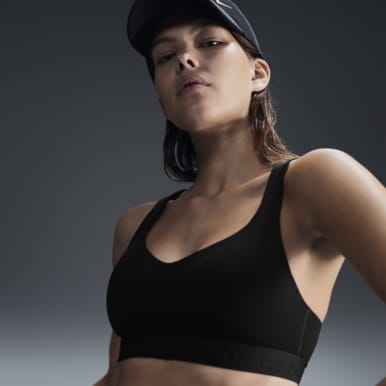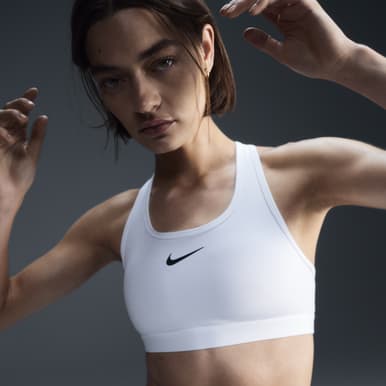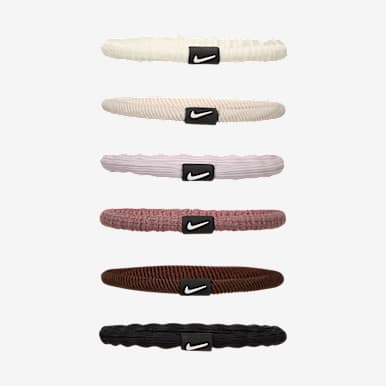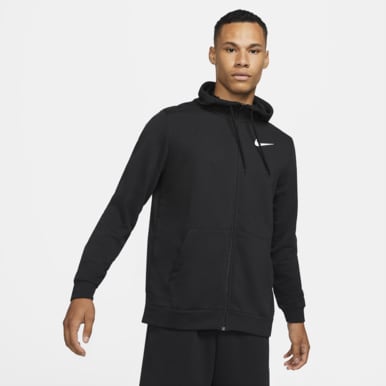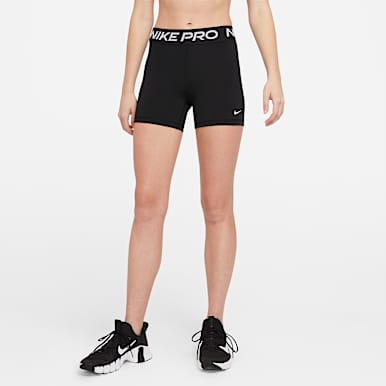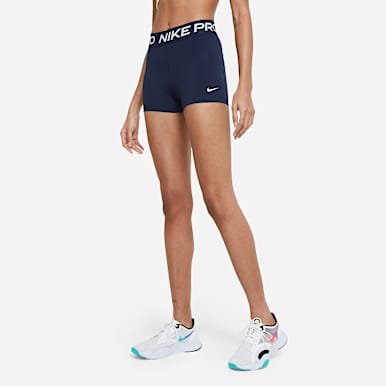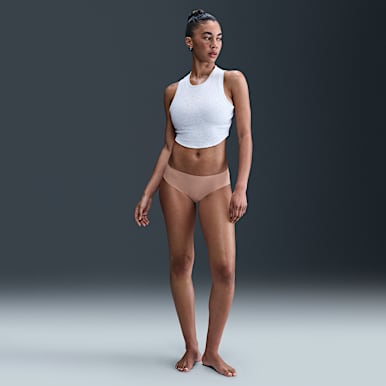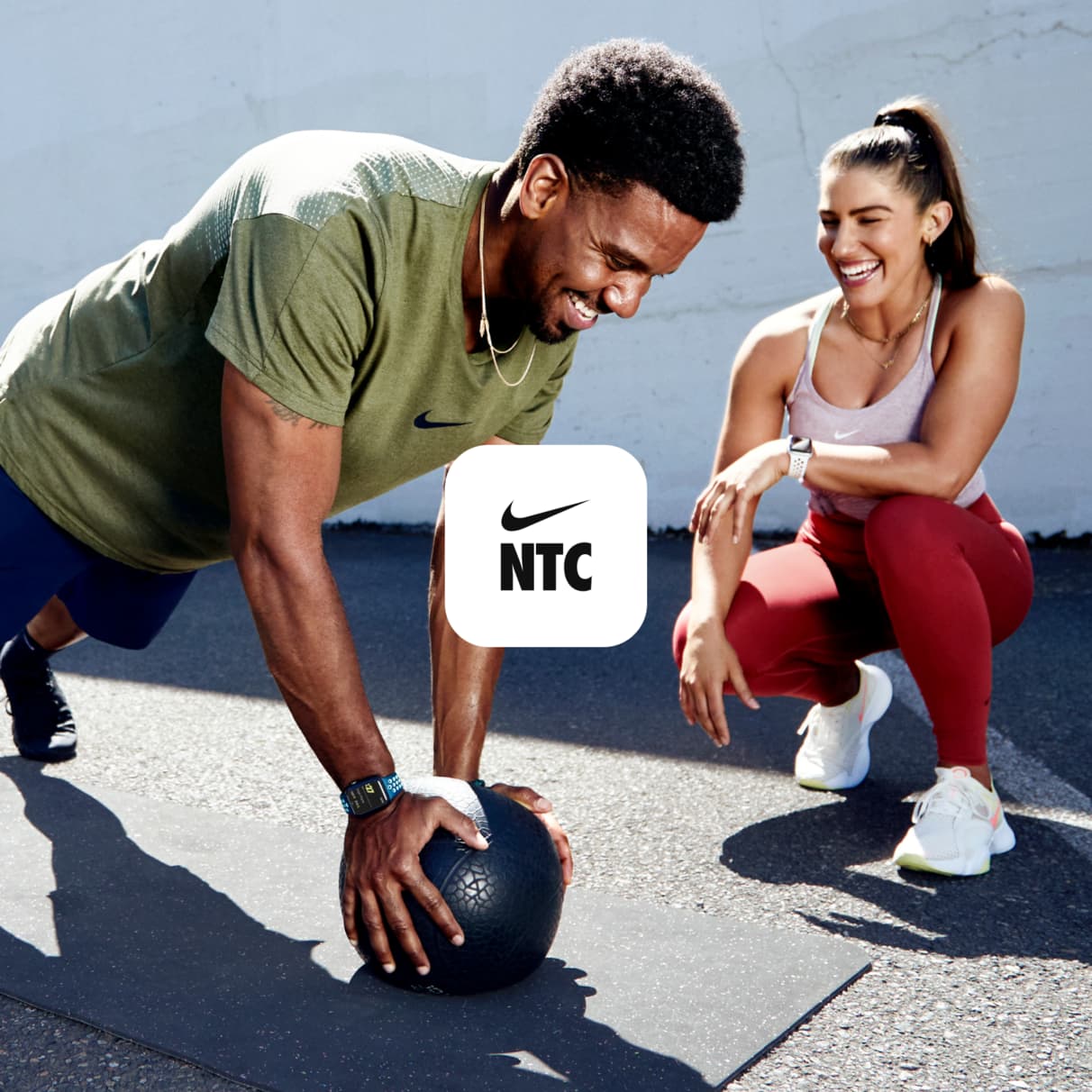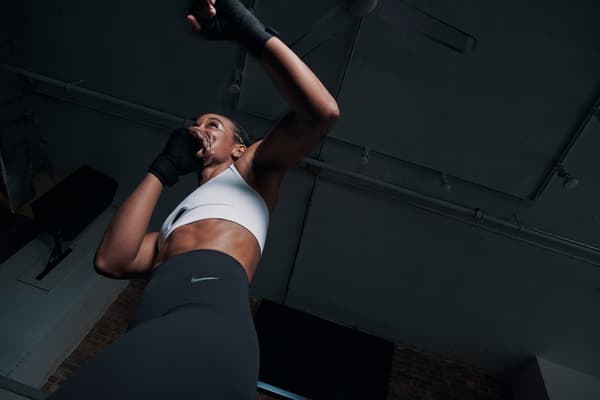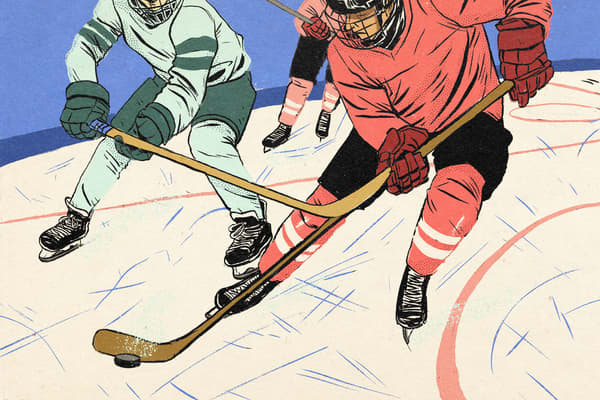All the positions on the volleyball court, explained
Sport & activity
Wondering who's who on the volleyball court? Here, coaches break down every position in a volleyball game.
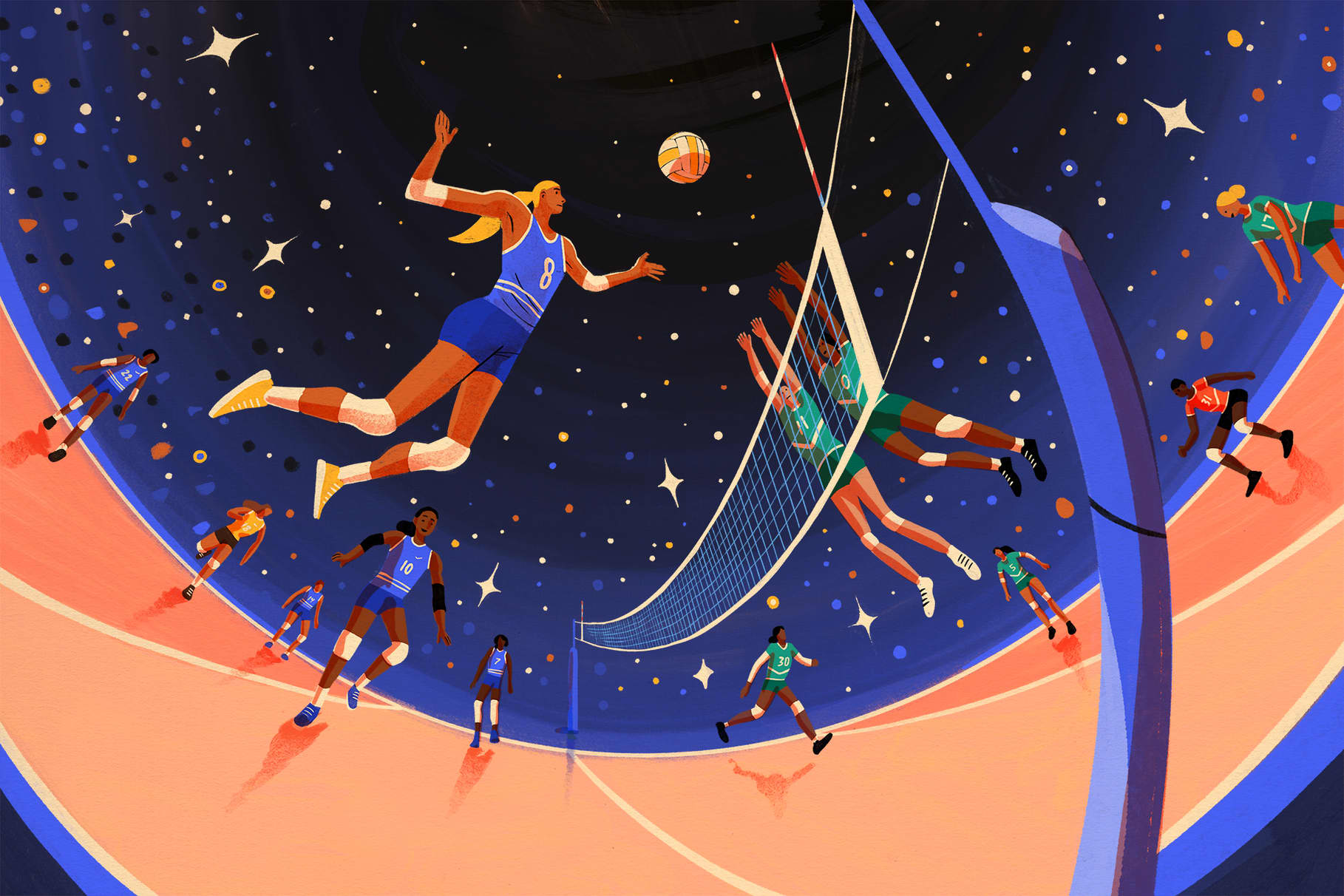
With all the jumping, swinging, spiking and yelling on the court, being a spectator at a volleyball game can be a lot for new fans to take in all at once. Volleyball games involve a dozen players, each with a specific space and role on the court.
On either side of the net, the volleyball court is divided into two zones by a horizontal line across the court. This is called the 10-foot line or 3-metre line. On each team, three players must begin the play in front of this line and three players begin the play behind it.
The players in the front row typically are specialised in blocking when on defence and jumping, spiking and scoring while on offence. The players in the back row are a combination of setters, defensive specialists and a type of player called the libero, who wears a different colour jersey from the rest of the team.
Read on to understand all of these positions—what they're called, what each position does and what type of player tends to excel in those roles. Below, volleyball coaches unpack all the specifics, plus how the positions rotate around the court.
What are the positions in volleyball?
1. Setter
"It's the most cliché analogy in our sport, but the setter is like the quarterback of the team", said Brian Rosen, assistant women's volleyball coach at Creighton University. "They run the offence. They make sure players are in the right spots. They distribute the ball. And they dictate who has the ability to score on every play".
Before the play, setters call plays for the team's offence, using hand signals or numbers to tell their teammates where to go and what moves to make once the ball is in play.
Like quarterbacks, setters are team leaders: "[Setters] get to run the team. You get to tell everyone what they're going to be hitting and you make decisions on the court when it comes to who gets set and who doesn't", said David Heller, head coach of women's volleyball at Georgetown University.
(Related: A beginner's guide to American football positions)
Another way the setter is like a quarterback: they touch the ball on every play and decide where it's going next. When the ball is hit over the net, a player defends by "digging" the ball out and hitting it into the air. Except for cases in which the setter is the one who has dug it out, the setter will be the next player to touch the ball. They then set up one of the hitters to be able to spike the ball and try to score.
"[Setters] can think really quickly on their feet. They make decisions in a really short period of time without losing their composure", said Heller. And because they're integral in setting the ball, running the offence and telling players where to go, setters rarely leave the court, he added. So, if you're a high-energy leader, this could be the position for you.
2. Outside hitter
The outside hitter, also called the left hitter, plays at the left net post. "Traditionally", Rosen said, "the outside hitter is the best on the team at hitting spikes to score". That's because they're positioned in a spot on the court where it's easiest for the setter to hit a set. Therefore, they tend to receive the most sets.
According to Jonny Neeley, assistant coach of the women's volleyball team at Brigham Young University (BYU), this is because setters can set the ball for outside hitters on both good and bad passes.
In BYU's offence, for instance, outside hitters can be set up to run and hit on a great pass when the setter has time to get in position and put the ball where the outside hitter can spike it. But, when the setter has to deal with a tricky ball, they can set the ball up really high, hitting a lob to the left post that the outside hitter jumps up and smashes down on the other side of the court.
"Another reason outside hitters need to be great at jumping and spiking", Rosen said, "is that they tend to stay in the game for almost every play". Since players rotate, that means outside hitters need to be able to spike not just at the net but from the back of the court, too.
"The three players who are in the back row (at the start of the play) cannot contact the ball and send it over the net in front of the 3-metre line", explained Neeley. If an outside hitter starts in the back of the court—behind the 3-metre line—on a play, they can't jump and spike in front of the line during that play.
"When they're playing in the back of the court, outside hitters should also be great at passing", Rosen said, "in order to move the ball forwards".
3. Opposite hitter
The opposite hitter, or right hitter, plays at the net post on the right side of the court. This means they're facing the opposing team's outside hitter.
"[Opposite hitters] have to be great blockers, because they're blocking the other team's outside hitter. And the outside hitter is getting set the most times", Rosen said. So, opposite hitters get the most opportunities to block shots.
Because of their position on the court, left-handed players often play opposite hitter. Rosen said, with their right shoulder at the right net post, a left-handed opposite can open up their body to the court as they jump to spike, facing the ball as it's set the entire time. Right-handed opposites often have to hit on sets that have come up over their heads.
Opposite hitters need to be able to pass and set, too. When plays go as expected, a player on the defence bumps the ball, then the setter hits the ball to set for one of the hitters. But, if the setter hits the first ball, it's often the opposite hitter who steps in to set a shot for another hitter.
Opposite hitters also need the skills to jump and hit from both the front row and back row. The role may not get as many sets as the outside hitter, but opposite hitters are crucial to winning.
"You have to have a good opposite to win at the highest levels. The best international teams are winning because they have [strong] opposites", Neeley said.
4. Middle hitter
The middle hitter, also called a blocker, lines up in the centre of the net in the front row.
"They do all the grunt work. They have to block the entire net, so they're responsible for blocking in both directions", said Rosen. When they're blocking, middle hitters jump in front of the net to try to block the balls smacked by the other team's hitters.
Because blocking is a big part of their role, middle hitters have traditionally been some of the tallest players on the court. "It's a lot of work. You're constantly jumping and blocking all the time", he added.
"Middle hitters also need to be quick moving from side to side", Neeley said.
"When they block, they're going all the way to the left and then all the way to the right", he said. Outside and opposite hitters only need to be able to block in their zone, so they don't need to do as much lateral movement. Middle hitters cover the court from sideline to sideline.
On offence, the middle hitter is in the toughest position for the setter to set to. Setting the ball near one of the poles, where the opposite and outside hitters are, is easier than doing so in the middle. "So, when there's a good set to the middle hitter, they have to do a good job of finishing the play and scoring", said Neeley.
"Middles need to be efficient, because you're using your best passes to set them. You need them to be able to score, because if you're not, you're wasting those passes", Neeley said. Like baseball players, volleyball players have a hitting percentage that represents how often they score on a hit across the net. Effective middle hitters have a hitting percentage of .375, .380 or more.
"While they're good at scoring, middle hitters can sometimes be weaker passers and defenders", Heller said. When the team's rotation (more on this below) moves the middle hitter to the back row, they're often taken out of the game and replaced by the libero or a defensive specialist until the rotation brings them back to the front row.
5. Libero
The libero is easy to spot on the court—they're the player wearing a different coloured jersey to the rest of their teammates. That's not the only thing that makes this position special, though.
"In women's volleyball, you're allowed 15 substitutions per set and the libero doesn't count as one of them", Heller said. The libero, which comes from the Italian word for "free", can be substituted in and out of the game for free.
So, when middle hitters or other hitters rotate into the back row, they can be subbed in and out for the libero without counting against the team's substitutions. This helps speed up the game, since the substitution doesn't need to be marked, and the libero can just run on and off the court.
This also helps with the team's defence. Most of the time, liberos go in for the middle hitters, who are usually the team's weaker defenders and passers, Rosen explained. "Liberos are defensive gurus. They're generally a team's best passer [and] best defender".
Though they're free to swap in and out, liberos are under some restrictions: they can only start a play in the back row, meaning they can never jump and spike in front of the 3-metre line. "They aren't allowed to set using their hands", Rosen said, "but can only do so with their forearms".
And depending on where the game is being played, they're either not allowed to serve or are only allowed to serve when swapped in for one of their teammates. In international play, liberos cannot serve. In American secondary-school and university play, they can serve but only for one of their teammates—typically a middle hitter.
6. Defensive specialist
A defensive specialist (DS) is a player who excels at playing in the back row.
"They play a similar role to a libero", said Rosen. Defensive specialists are great at defending balls that get past their teammates' blocks, getting the ball back in the air for the setter. And they're strong passers. When an outside or opposite hitter who isn't a strong passer or defender rotates into the back row, a defensive specialist might be substituted in to take over their back-row responsibilities.
The challenge: unlike liberos, swapping in a DS costs a team one of their 15 substitutions per set. "So, they can't swap in every time a hitter comes to the back row", Neeley said, "meaning defensive specialists aren't on the court as much".
"We're typically rotating 15 times per set", he said. So swapping in too many defensive specialists can result in running out of substitutions. "If you run out, you can't make any more subs. And your DS, who typically doesn't know how to hit, has to rotate into the front row [where they will have to try to hit]".
How positions rotate in volleyball
Though positions have their ideal spots on the court—outside hitter on the left pin, opposite hitter on the right pin, middle hitter in the middle, etc.—there's a hiccough: the players have to rotate.
"You have three people in the front and three in the back. And as soon as you earn a point, you have to rotate, and you rotate one spot in a big circle", said Neeley.
Players have to do this clockwise rotation after the team receiving a serve wins a point and before their team gets to start serving again. On the first rotation, for example, the outside hitter will move to the middle. The middle hitter will move to the right post, where the opposite hitter would normally be. And the opposite hitter rotates into the back row on the right side.
The solution: after the ball is served, everyone runs back to their normal positions. In the example here, the outside hitter would shift back to the left and the middle hitter would move back to the middle.
"When our team is serving, that's really easy, because we can just switch the second the server makes contact with the ball", Neeley said. It gets trickier on defence, he says, because the team needs to defend the serve and try to get back into position.
Another part that's tricky: the 3-metre line. When players rotate into the back row, they can't jump and hit at the net. So the opposite hitter, who has rotated into the back-right spot, can't hit at the net until their position comes back up to the front row. They'll either need to jump and hit shots from the back row or be substituted for a libero or defensive specialist.
Words by Greg Presto

